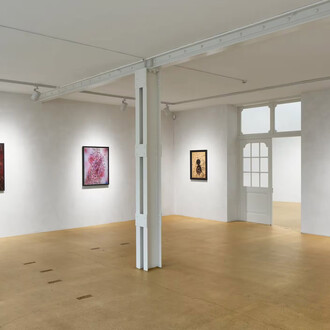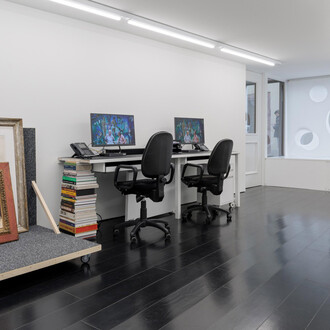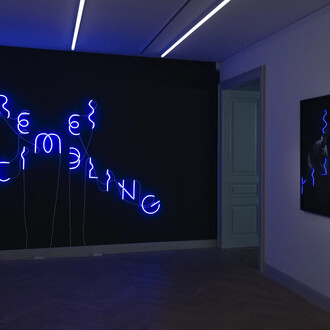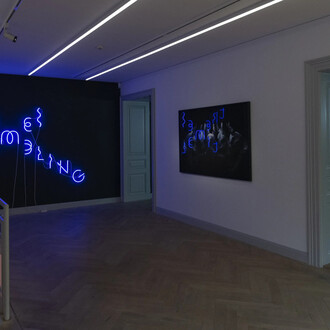Gagosian is pleased to present recent works by Katharina Grosse and Tatiana Trouvé. The exhibition will inaugurate Gagosian’s Basel gallery programming, following Continuing Abstraction, the group exhibition presented in conjunction with Art Basel 2019. This latest addition to Gagosian’s constellation of galleries builds upon Basel’s rich cultural scene and aims to further enhance the city’s identity as an international hub for modern and contemporary art.
This will be the second time that Grosse and Trouvé have exhibited together, after Le numerose irregolarità at Villa Medici, Rome, in 2018, although in Basel their works will be displayed side by side in unprecedented direct relation.
To create her vibrant abstract works, Grosse blasts paint across canvas with a spray gun. Her energetic, arcing motions cover the studio walls in pigment, conceptually echoing her practice of painting in situ directly on the surfaces of objects, rooms, or entire buildings. In three enormous silk hangings, the material accumulations of Grosse’s painting process—buckets, chairs, cables, and canvases, strewn against a color-flooded wall—are captured in digital print. Grosse’s uncannily self-reflexive prints destabilize perceptions of volume and weight; cluttered, photorealistic walls appear architecturally solid but melt into diaphanous swaths of fabric, susceptible to the slightest movement of air.
In Trouvé’s series Les indéfinis (2014–), plexiglass replicas of art-shipping crates are paired with hyperrealistic bronze or copper casts of common objects. In a subversion of material solidity, pliant household items—tires, electrical cords, and macramé hangings—are re-created in unyielding metal, while the greenish luster of plexiglass transforms the crate from a coarse container for art transportation into a work of art itself. Against these limpid vitrines, Trouvé’s casts become three-dimensional drawings—as if the wires, gears, and foils of Marcel Duchamp’s The Large Glass (1915–23) have escaped their panes, reemerging as diagrammatic objects.
At first, Grosse’s flamboyant prints and Trouvé’s meditative sculptures appear contrapuntally opposed: silk against bronze and glass; dripping, aleatory colors against spare lines and volumes. Despite their contrasting approaches to materiality and hue—or perhaps because of them—each artist’s work animates, illuminates, and adapts to the other’s. Both the prints and sculptures reproduce elements of the artist’s studio and the real world while signaling to their illusionistic modes of facture—creating dialogue between the works that dramatizes a continuous give-and-take between absorption and reflection.















